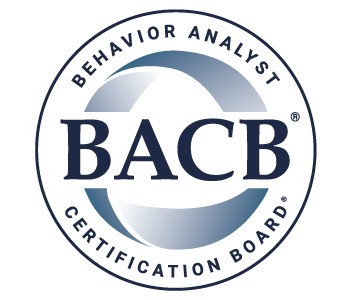
First things first—congratulations! You met your eligibility requirements, passed your examination, and earned your certification. You just successfully finished what some believe to be the hardest part of becoming an RBT, BCaBA, or BCBA.
But now you’re facing a whole new set of challenges, including maintaining your certification and assuming your new role. To help you start off on the right foot, here are a few tips for your first weeks as a certificant.
Tip #1: Review the contact information in your BACB account
When you earn your certification, it’s important to review your BACB account and update any outdated or incorrect information. Although the BACB strongly encourages applicants to review and update their contact information as changes occur, this tip is especially important once you pass your examination and earn your certification.
But why is this review so crucial?
For one, within 4–6 weeks of passing your BCBA or BCaBA examination, your official certificate will arrive at the mailing address listed in your BACB account—however outdated that address may be. So, to prevent a mailing mishap, be sure to update your home address. Also take care to review your name, phone number, and email address, as outdated or incorrect information in any of these fields may create a problem down the line.
Tip #2: Get familiar with the Certificant Registry
The Certificant Registry is a database that includes vital information about all BACB certificants, including their location; certification number, status, and activation/recertification date; disciplinary actions or sanctions, if any; and availability for supervision services. It’s a valuable resource for employers, service recipients, applicants, and certificants alike, so we recommend getting to know it a little bit better.
As a new certificant, you will not appear in the database immediately. Like your certificant number, which may take up to 24 hours to appear in your BACB account, your name may take up to 48 hours to appear in the Certificant Registry. At that point, your certification information will become public.
Once your information is public, potential employers and supervisors can use the Certificant Registry to verify your certification. You can also use the registry to find and contact supervisors in your area if or when necessary. But be careful—as stated earlier, if your address is not updated in your BACB account, the registry may not reflect your current location.
We encourage you to give the Certificant Registry a try—maybe even search your own name to see how you will appear to others!
Tip #3: Update your resume and curriculum vitae
This tip is as short and sweet as they come, but it’s important nonetheless: Don’t forget to list your new certification on your resume and/or curriculum vitae! Once you enter the working world, you’ll want to ensure that your new title—and all of the hard work that went into getting it—is reflected on paper for potential employers to see.
Tip #4: Research your state’s licensure requirements
If you are a BACB certificant who intends to practice in the United States, you must adhere to your state’s licensure requirements before practicing or billing. This tip may be the most crucial in this list, as ABA practitioners who practice without licensure in regulated states may face serious consequences, such as disciplinary actions against their certification or even incarceration.
Follow these steps to learn more:
- Visit our U.S. Licensure of Behavior Analysts web page.
- If your state is regulated, click on your state in the table to navigate to its regulatory board website.
- There, you can find detailed information about your state’s licensure requirements and applications, if necessary.
Tip #5: Establish a maintenance plan
“There’s no such thing as too early!” – Bird that got the worm
It never hurts to be prepared, which is why it’s a great idea to begin establishing a plan to meet the maintenance requirements for your certification as soon as possible. As an RBT, BCaBA, or BCBA, you must meet specific requirements and complete certain tasks before you are able to recertify. It’s helpful to keep those to-dos in mind and plan ahead to avoid a last-minute panic or, at worst, an expired certification.
To create a maintenance plan, find out the length of your recertification cycle, the continuing education (CE) requirements that you must meet, if any, and the tasks that you must complete within the 45-day period before your recertification date. Then, do your research! Visit the Continuing Education tab in your BACB account to find a summary of the continuing education units needed for your current certification cycle or review the RBT Renewal Competency Assessment Packet—maybe even mark your target milestones on a calendar or planning app.
To get started, check out the following table to see a basic overview of the current BACB maintenance requirements for each certification.
| Overview of Maintenance Requirements | ||||
|---|---|---|---|---|
| Certification | Recertification Date | CE Requirements | Ongoing Requirements | 45 Days Before Recertification Date |
| RBT | 1 year from original certification date | Not applicable |
|
|
| BCaBA | 2 years from original certification date |
|
|
Recertify |
| BCBA/BCBA-D | 2 years from original certification date |
|
Abide by BACB ethics and self-reporting requirements | Recertify |
For more detailed, in-depth information about current BACB maintenance requirements, please visit the RBT, BCaBA, or BCBA Handbook.
Tip #6: Check out the Resources tab in your BACB account
As a new BCBA or BCaBA, you have access to multiple behavior-analytic scholarly journals and databases. These journals and databases may be helpful resources for you as you integrate current research into your behavior-analytic practice activities—and the best part is that through your BACB account, they’re free!
We encourage you to take some time to explore the Resources tab, as spending time in behavior-analytic literature is one of the best ways to stay in the know about advancements in the field. In fact, in a profession that is rapidly advancing, your education will continue long after you pass your examination.
These six tips are not the end-all, be-all of your first weeks as a BACB certificant. No matter how thoroughly you plan and prepare, you will surely run into hiccups and roadblocks at one point or another. That’s simply the nature of doing something new. Even so, we hope that these tips help you more confidently assume your new role.
Thank you for your hard work and dedication to applied behavior analysis. We are so happy to have you as a certificant. Best of luck!
